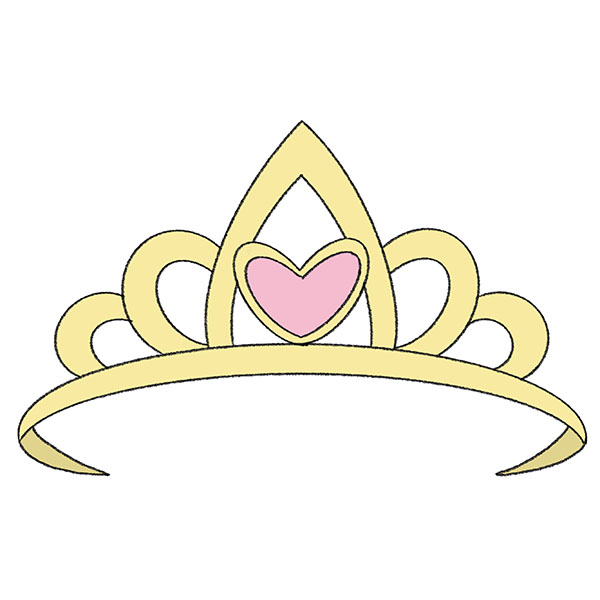How to Draw a Ladder
Welcome to my exclusive guide on how to draw a ladder, crafted for those who appreciate the subtle art of simple objects. In this session, you’ll be guided through a series of deliberate strokes, each one contributing to a structure that’s both functional in essence and delightful in representation.
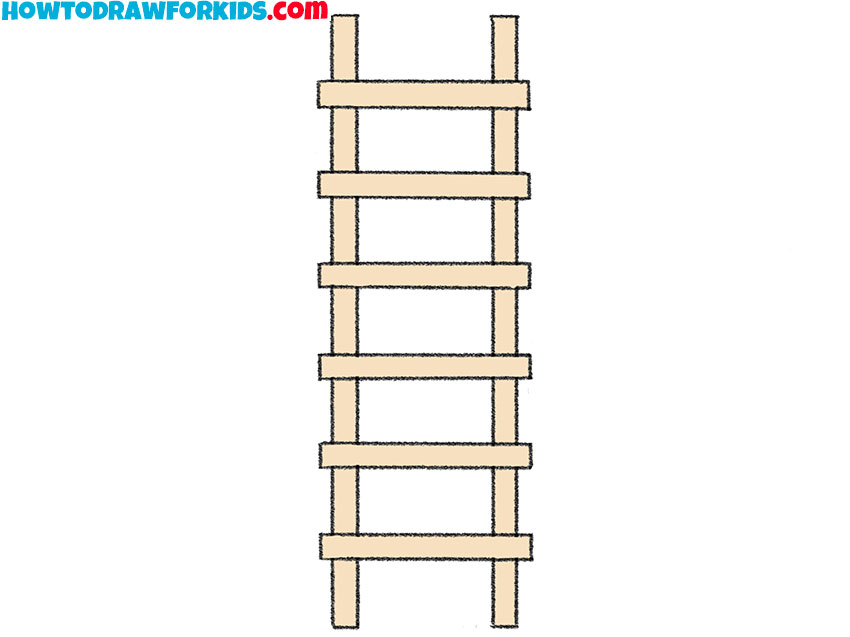
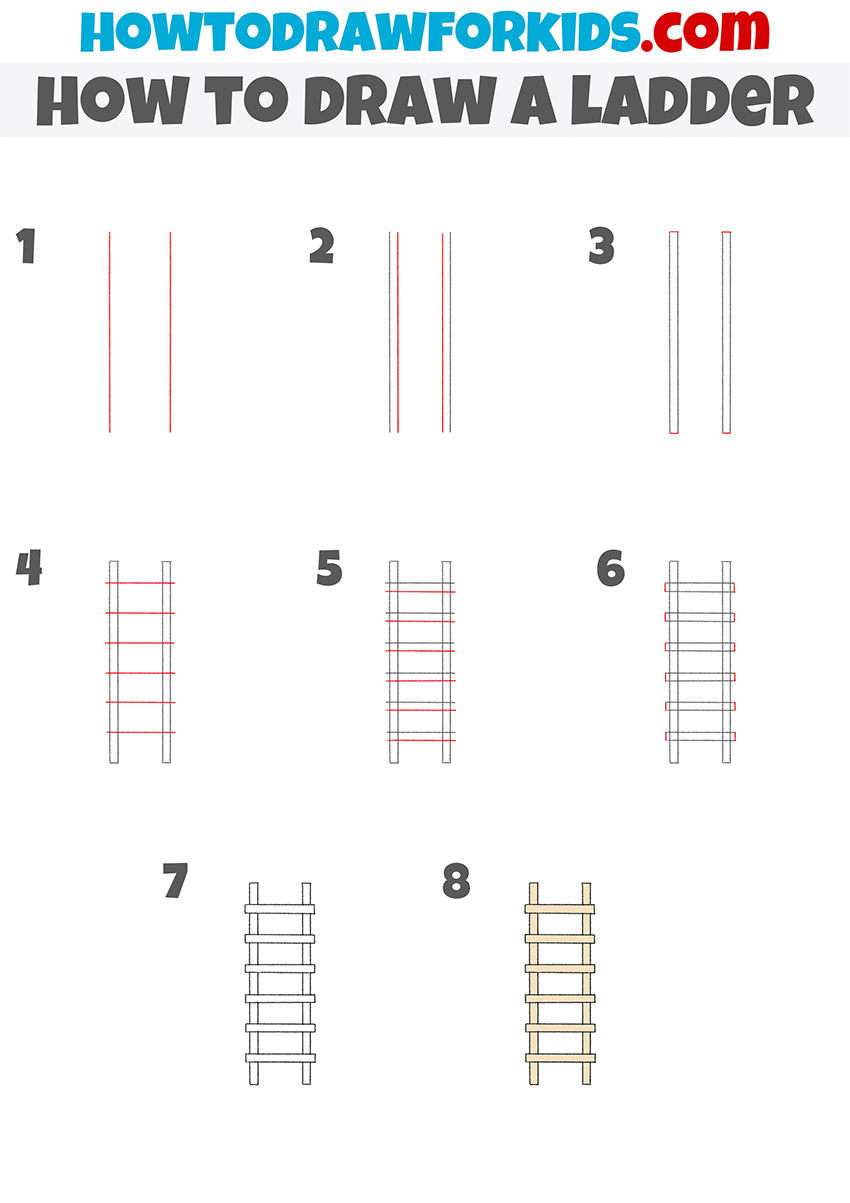
How to Draw a Ladder: Basic Information
As the architect of this how to draw a ladder tutorial, I sought to strip down to the essence of this familiar object. A ladder, in its simplicity, carries the elegance of function and the promise of heights yet to be reached. Here, we will meticulously trace its structure, line by line, capturing not just the physical form but also the notion of climbing higher with each mark.
The ladder on this page is unique, its form capturing a blend of strength and grace. Each rung, carefully drawn, is a testament to the thoughtful process behind its creation. With this method, we create not just art, but a testament to methodical beauty.
By the conclusion of our session, to draw a ladder will be a skill tucked neatly into your artistic repertoire. It’s a skill that speaks of the ability to find the extraordinary in the ordinary, transforming simple lines into a piece of art that stands proud on your page.
Ladder Drawing Tutorial
Materials
- Pencil
- Paper
- Eraser
- Coloring supplies
Time needed: 30 minutes
How to Draw a Ladder
- Draw the vertical slats.
Add two straight vertical lines at some distance from each other.

- Depict the thickness of the rails.
Sketch out two more vertical lines along the lines drawn earlier.
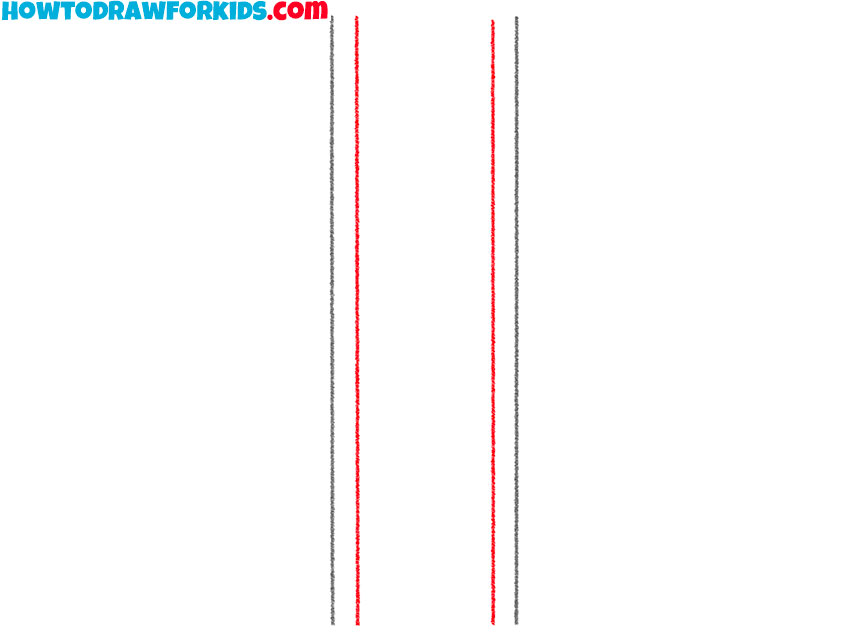
- Add the ends of the rails.
Draw short connecting lines on each river to make closed loops.
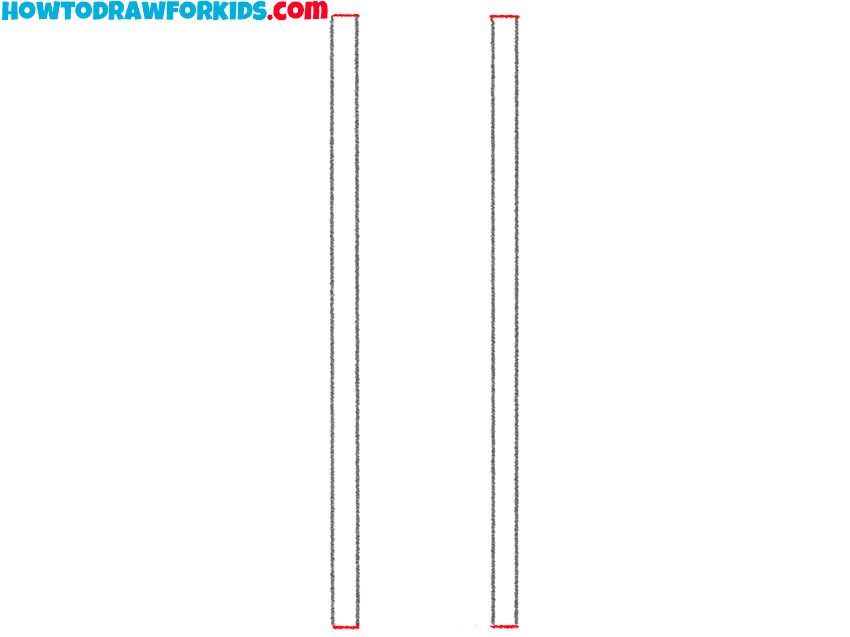
- Label the steps.
Draw several horizontal lines between the slats, while maintaining equal intervals.

- Draw the thickness of the steps.
Add even horizontal lines along the previously drawn lines.
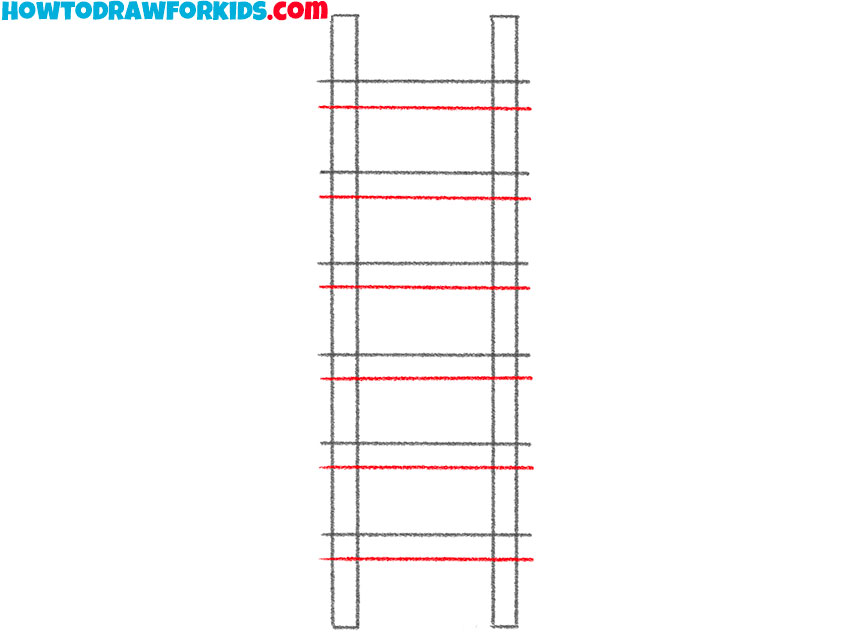
- Add the side contours of the steps.
Draw small connecting lines on the sides of the stumps.
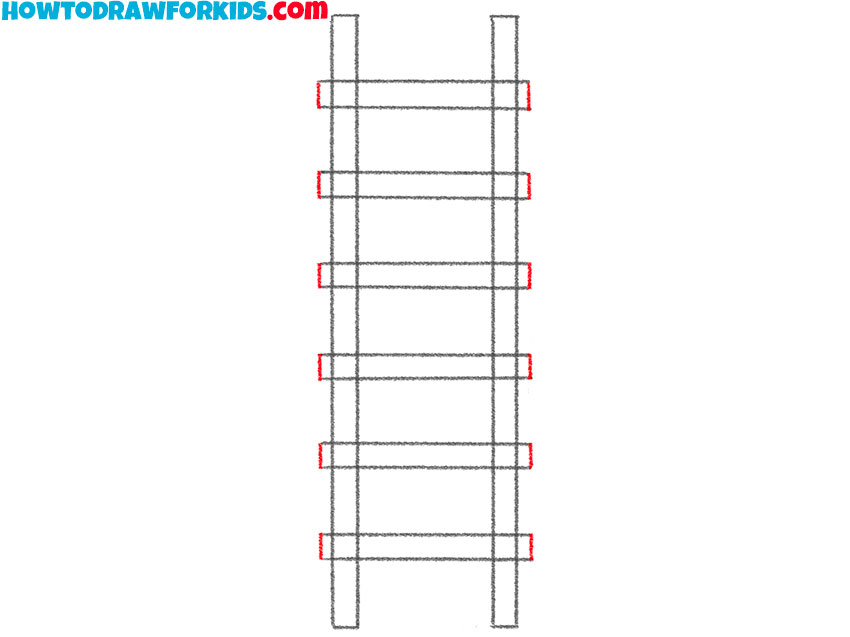
- Correct inaccuracies.
Take the eraser and carefully remove all the extra lines.
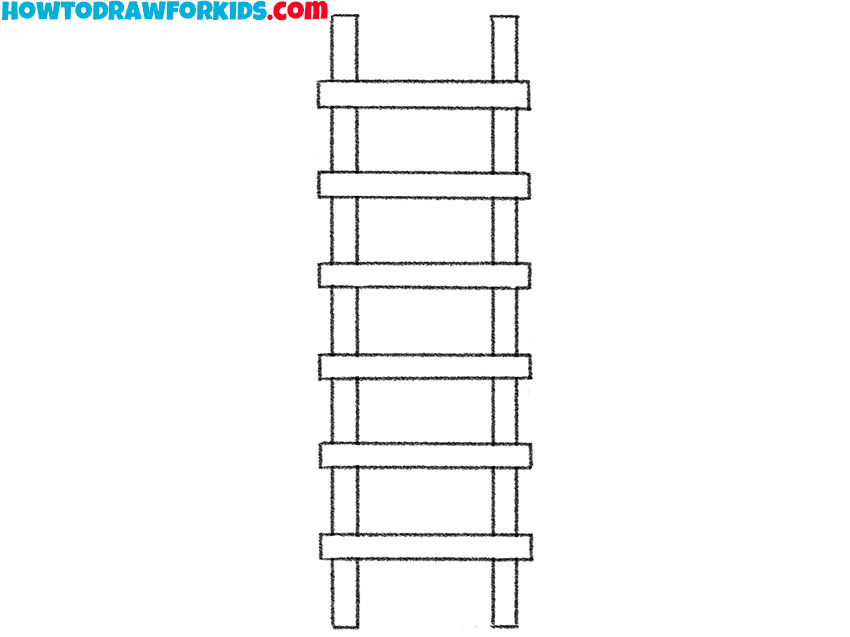
- Color the drawing.
For coloring, use any shades of brown.

Additional Content
To complement the online tutorial, I’ve also created a free downloadable PDF file. This concise version of the lesson is portable, allowing you to access it anytime, anywhere, even when you’re far from the reach of the internet. It’s designed to be a companion that walks with you beyond the screen, into the realm of your creative space.
Inside the PDF, you won’t find the steps or tips from the main tutorial – those remain a click away online. What the PDF offers is additional material, aimed at enhancing your drawing skills once you’ve mastered the basics. It’s a collection of exercises and insights that serve as the next rung on your ladder to becoming a more skilled artist.
After you’ve completed the primary drawing lesson, this PDF becomes your silent mentor, guiding your hand as you refine your technique and develop confidence in your strokes. It’s meant for those moments of practice, where repetition is the key to progress, and the subtle nuances of shading and perspective become your focus.
Alternative Drawing Method
Beyond the main tutorial, I’ve devised an alternative drawing technique for the ladder that’s streamlined for practice and perfecting your artistry. This new method strips down the complexity, focusing on the core elements that make a ladder, allowing for a quicker, more intuitive drawing experience.
This fresh approach is about reinforcing your fundamentals while offering a different perspective on the same subject. By simplifying the process, you can concentrate on the fluency of your lines and the steadiness of your hand, building muscle memory and a deeper intuitive connection with your drawings.
As you engage with this simpler technique, you’ll find your skills honing with each ladder you draw. It’s crafted for those keen to explore the subtleties of drawing without becoming ensnared by complexity. It’s about building confidence and speed, laying a solid groundwork for more elaborate projects in the future.
Really Simple Ladder Drawing Tutorial for Preschoolers
This four-step method for preschoolers begins with a single, upright rectangle, laying down the frame of our ladder. The simplicity of the shape makes it approachable for little hands, emphasizing straight-line drawing skills which are foundational for young learners.
Moving to step two, horizontal lines are drawn within the bounds of the rectangle, transforming it into a series of equally spaced rungs. This exercise is excellent for teaching consistent spacing and reinforces the concept of parallelism, both essential elements in drawing and cognitive development.
For the third step, we erase the intersecting parts of the rectangle, revealing the sides of the ladder. This action helps refine the child’s fine motor skills and understanding of composition. Lastly, a splash of color brings the creation to life, enhancing their engagement and sense of achievement with this simple yet effective drawing method.

Drawing Ladders: Techniques for Ascending in Art
Starting the process of enhancing your drawing skills is both an exciting challenge and a pathway to creative satisfaction. Each line you draw is a new opportunity to refine your technique and push the boundaries of your artistic capabilities. Here are detailed steps to help you improve:
- Practice Straight Lines: Consistently draw long, straight lines. This will help in improving your hand-eye coordination and steadiness.
- Experiment with Pressure: Use varying degrees of pencil pressure to create different line weights. This adds depth and dimension to your drawings.
- Study Proportions: Spend time observing the relationship between different parts of objects. Proportions are key to realistic drawings.
- Embrace Shading Techniques: Begin with simple shading techniques to bring volume to your ladder. Observe how light plays on objects to better understand shadows.
- Incorporate Perspective: Play with angles and lines converging at a point to give your ladder a three-dimensional feel.
- Use References: Look at real ladders and photographs. Notice the details and textures that you can incorporate into your drawing.
- Repeat Forms: Draw not one, but a series of ladders. With each repetition, notice the improvement in your lines and confidence.
- Seek Feedback: Show your work to others and be open to constructive criticism. Fresh eyes can offer valuable insights.
- Mind the Space Around: Be aware of the negative space in your drawings. It’s crucial for composition balance.
- Color Exploration: Don’t hesitate to add color. It can transform your drawing, giving it a new layer of expression.
In wrapping up, take these tips to heart, practicing deliberately, and observe how your drawings evolve with grace and precision. Let each piece be a testament to your growing skill set and a step forward in your path to artistic excellence.
Ladders in Artwork: Crafting Scenes with a Simple Tool
The ladder is a simple tool that we often overlook, but in the art, it can become a key feature that adds depth and interest to a scene. It can take on different roles depending on where you place it, offering a narrative element that sparks curiosity and engagement.
Check out these scenarios where a ladder could add an interesting twist:
- In a Majestic Library: Tucked next to towering bookshelves, it’s a practical tool for reaching those top-shelf stories.
- At a Fruitful Orchard: Set against a tree, it becomes a helper in a fun apple-picking adventure.
- Against the Canvas of the Night: Outlined against the moon, the ladder turns into a dreamy escape into the sky.
- Alongside an Enchanted Garden Wall: Leaning on an old stone wall, the ladder is a passage to a hidden garden wonder.
- In an Artist’s Atelier: Next to a large painting, it’s a part of the creative process, helping an artist add those final touches.
- Within a Children’s Play Area: Connected to a slide, the ladder is a starting point for a fun ride down.
- In the Heart of the Urban Jungle: Up against a busy city building, it’s a symbol of construction and development.
So, a ladder transcends its rungs and rails; it acts as a bridge to various stories and experiences in your drawings. It serves a functional purpose and brings a touch of magic, reminding us that we can always find ways to elevate our perspective and reach new heights, even within the simplest scenes.
Conclusion
With the last line drawn, your ladder is now complete, yet this is just the starting point for expanding your artistic repertoire. Visit my website for a variety of engaging drawing lessons, from capturing the wild essence of a bear to mastering the iconic stance of Goku. Each lesson is designed to push your skills further.
Stay in the loop by following me on social media, where updates and new content are always at your fingertips. If you have any requests or ideas for future tutorials, feel free to leave comments below this lesson; your input helps guide me content direction.




